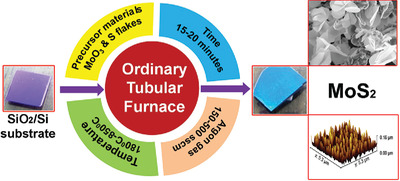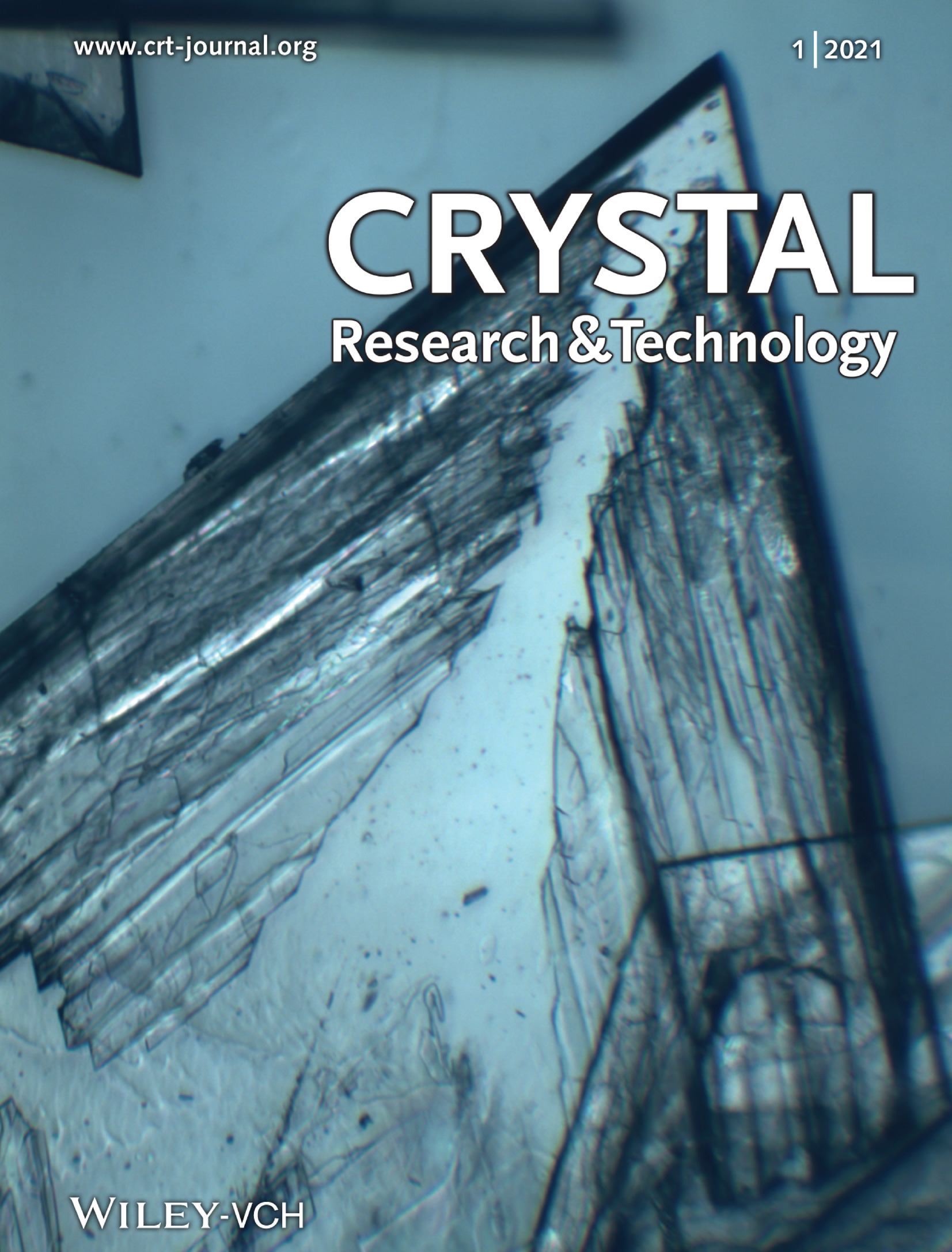Journal list menu
Export Citations
Cover Picture
Masthead
Comment
Comments on the Paper: “Synthesis, Growth and Optical, Mechanical, Electrical and Surface Properties of an Inorganic New Nonlinear Optical Crystal: Sodium Cadmium Tetra Chloride (SCTC)”
- First Published: 06 November 2020

A critical analysis of the growth of sodium cadmium tetra chloride (SCTC) crystal proves that SCTC is an improperly characterized material. Use of X-ray powder data to check phase purity is demonstrated. Submission of CIF file to CSD or ICSD is suggested as an essential prerequisite for reporting new compounds.
Editorial
Original Papers
Numerical Modeling of Heat Transfer and Thermal Stress at the Czochralski Growth of Neodymium Scandate Single Crystals
- First Published: 05 November 2020

In semitransparent crystals, mainly the absorption coefficient for radiation determines the temperature field. For a wide range of absorption values, NdScO3 crystal growth using the Czochralski method is numerically simulated. The calculated and experimental deflection values of the crystal–melt phase boundary are compared and the thermoelastic stresses (scale in Pa) are calculated for all cases.
Effects of Al2(SO4)3 and K2SiO3 Impurities on the Crystallization of K2SO4 from Aqueous Solution
- First Published: 04 November 2020
Luminescent and Mechanical Properties of Cerium Doped Potassium Chloride Single Crystal
- First Published: 16 November 2020

In this paper, large sized pure KCl and KCl:Ce3+ crystals are successfully grown and characterized by using the resistance heating Czochralski method. Ce ions doping the KCl crystal improve the hardness and luminescence intense, the luminescence decay time of KCl:Ce3+ crystal is found to be 35.14 ± 0.17 ns.
Facile Synthesis of Vertically Aligned MoS2 Nanosheets at Ambient Pressure
- First Published: 26 November 2020

Cost-effective synthesis of vertically aligned two-dimensional (2D) molybdenum disulfide (MoS2) on silicon oxide has been demonstrated by a fast reduction of molybdenum trioxide (MoO3) in a simple tubular furnace at ambient pressure. Raman spectroscopy, atomic force microscopy and field emission scanning electron microscopy have been used to confirm the best quality vertically aligned 2D MoS2.
Reduction of Humidity Effect in WO3 Thin Film-Based NO2 Sensor Using Physiochemical Optimization
- First Published: 27 November 2020

Surface passivation on oxygen rich WO3 thin film using hydroxyl bonds at grain boundary defects through high temperature ageing is used to prevent water molecule interaction with WO3 thin film. Also, the use of high temperature Nichrome mesh and absorbent filters are explored for reducing the cross sensitivity due to humidity.
Investigation of Structural, Electronic, and Dynamic Properties of Half-Heusler Alloys XCuB (X = Ti, Zr) by First Principles Calculations
- First Published: 30 November 2020

The density functional theory in the generalized gradient approximation (GGA) is used to find the structural, electronic, and dynamic properties of the TiCuB and ZrCuB alloys. Electronic band structure graphics show that these alloys are semiconductor. The phonon distribution curves indicate that TiCuB and ZrCuB are dynamically stable alloys. These calculations are made for the first time in the literature.







